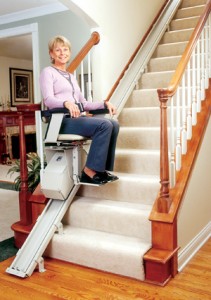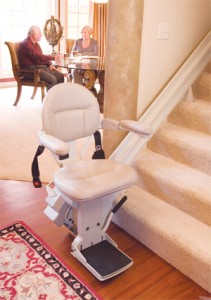Introduction:
National Anti-Boredom Month offers an opportune time to explore avenues that enrich the lives of seniors. As individuals age, maintaining mobility becomes increasingly essential for their overall well-being. Stair lifts represent a valuable solution in this regard, offering seniors newfound independence and the ability to navigate their homes safely. In this article, we delve into the significance of stair lifts for seniors, particularly during National Anti-Boredom Month, and how they contribute to an active and fulfilling lifestyle.
The Importance of Mobility for Seniors:
Mobility plays a pivotal role in the daily lives of seniors. The ability to move freely within their homes not only fosters independence but also ensures safety and comfort. However, challenges such as reduced strength, joint pain, and balance issues can hinder mobility, especially when it comes to navigating stairs. According to the Centers for Disease Control and Prevention (CDC), falls are a leading cause of injury among older adults, highlighting the importance of addressing mobility concerns proactively.
Enter Stair Lifts:
Stair lifts, also known as chair lifts or stair gliders, offer a practical solution for seniors facing mobility limitations. These innovative devices are designed to transport individuals up and down staircases effortlessly and safely. A typical stair lift consists of a motorized chair attached to a track installed along the staircase, allowing users to ascend or descend with ease at the push of a button.
Enhancing Independence:
One of the most significant benefits of stair lifts for seniors is the preservation of independence. Rather than relying on assistance or avoiding certain areas of their homes, seniors can confidently access all levels without fear of falling or exerting excessive effort. This newfound independence fosters a sense of empowerment and autonomy, contributing to a higher quality of life.
Promoting Safety:
Safety is paramount, especially for seniors with mobility challenges. Stair lifts provide a secure means of traversing stairs, significantly reducing the risk of falls and related injuries. Features such as safety sensors, seat belts, and smooth start-and-stop mechanisms ensure a comfortable and secure ride, instilling confidence in users and their caregivers alike.
Comfort and Convenience:
In addition to safety, stair lifts offer unparalleled comfort and convenience for seniors. The ergonomic design of the chairs ensures optimal support and comfort during transit, allowing users to navigate stairs without strain or discomfort. Moreover, the convenience of stair lifts eliminates the need for strenuous climbing or descending, making everyday activities more manageable and enjoyable.
Adaptable Solutions:
Stair lifts come in various models and configurations to suit different staircase designs and user preferences. Whether dealing with straight, curved, or narrow stairs, there exists a stair lift solution tailored to each unique situation. Furthermore, advancements in technology have led to the development of features such as foldable seats, remote controls, and battery backup systems, further enhancing the versatility and functionality of stair lifts.
Improving Quality of Life:
By promoting mobility and independence, stair lifts contribute significantly to the overall well-being of seniors. The ability to move freely within their homes allows seniors to remain engaged in daily activities, interact with their surroundings, and maintain social connections. As a result, they experience a greater sense of fulfillment, purpose, and happiness, which are essential components of a fulfilling life, particularly during National Anti-Boredom Month.
Financial Considerations:
While the benefits of stair lifts are undeniable, it’s essential to consider the financial aspect when investing in such equipment. The cost of purchasing and installing a stair lift can vary depending on factors such as the staircase configuration, additional features, and installation requirements. However, many manufacturers offer financing options and assistance programs to make stair lifts more accessible to seniors on a budget.
Conclusion:
As we observe National Anti-Boredom Month, let us recognize the importance of staying active and engaged, especially for seniors. Stair lifts represent a valuable resource in promoting mobility, independence, and safety, enabling seniors to navigate their homes with ease and confidence. By embracing innovative solutions like stair lifts, we can empower seniors to lead active, fulfilling lives well into their golden years.





